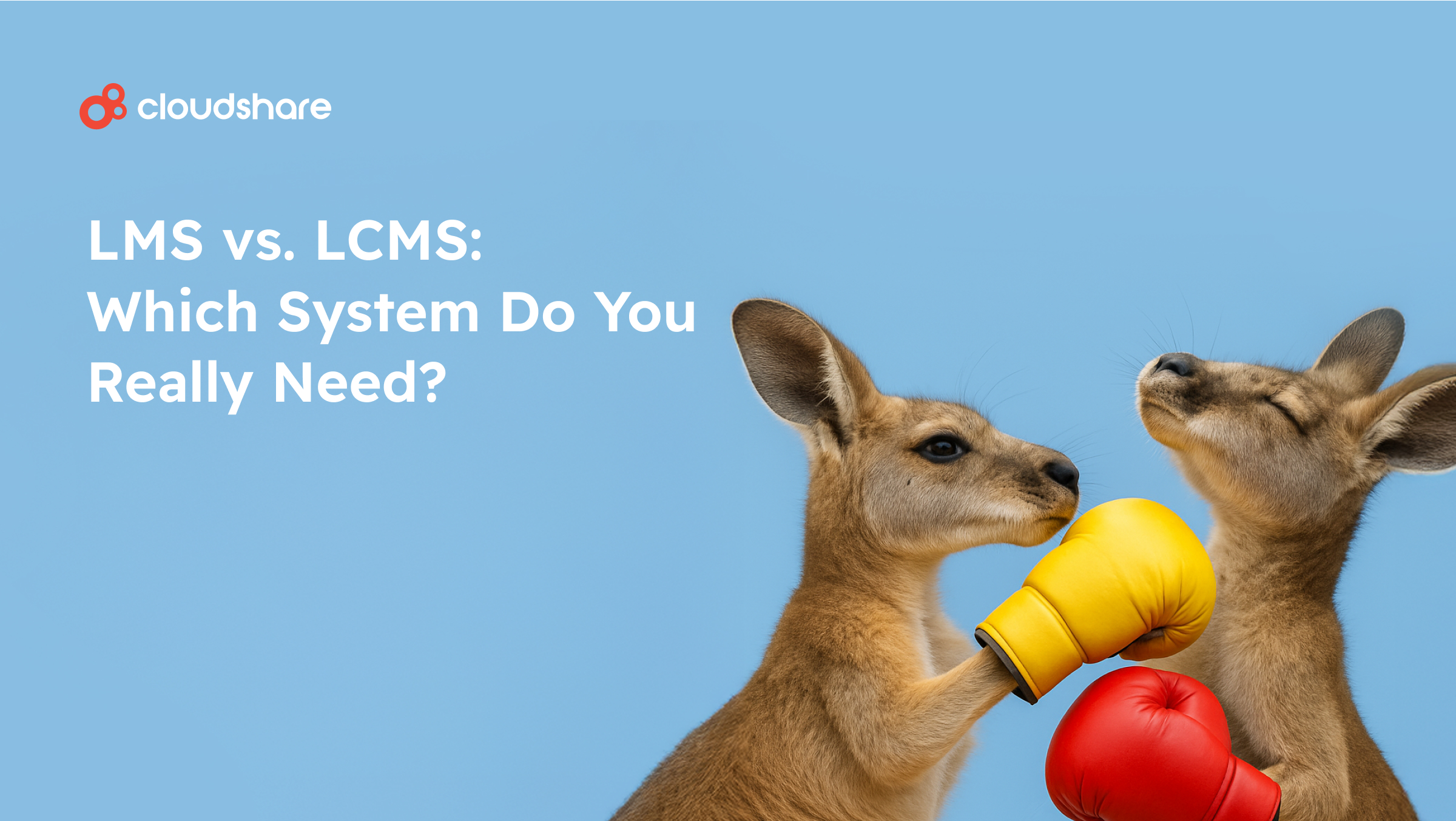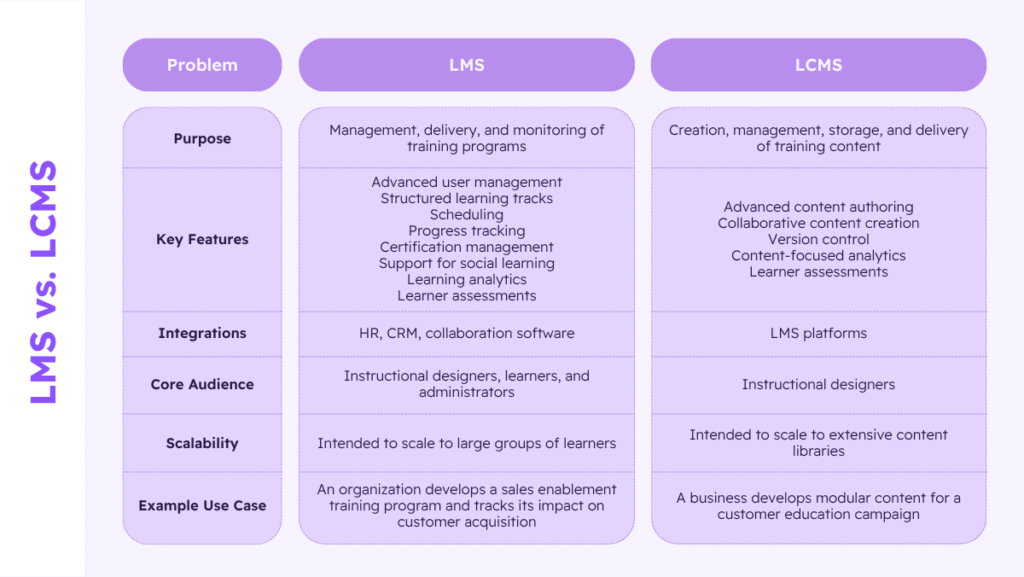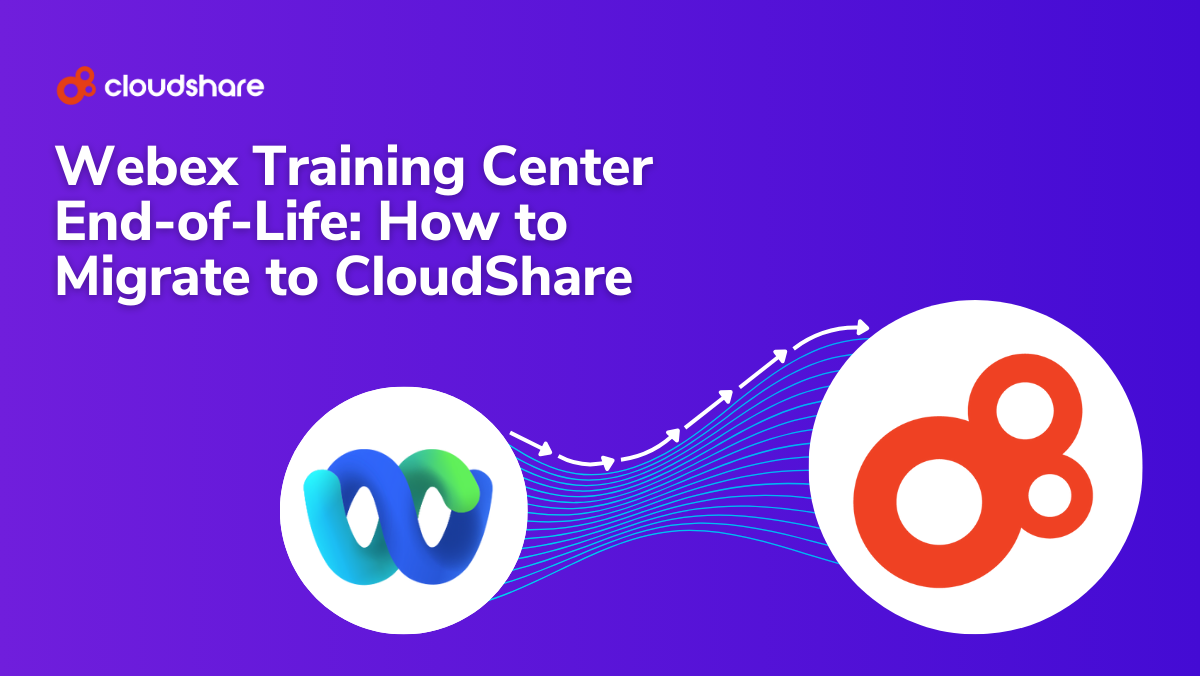
They might look similar at first glance, but LMS tools and LCMS tools serve very different purposes.
Understanding the differences is crucial if you want to figure out which of the two you should use. This article covers the key features and focuses of each platform type, explores the key differences, and will help you decide which one best suits your company’s needs.
What is a Learning Management System (LMS)?
A learning management system is a platform that helps schedule, deliver, administer, track, and document training. It provides a centralized location for coordinating all of a company’s training initiatives. For learners, it functions as a consolidated library where they can access and participate in training.
Some of the main functions of an LMS include content management, user management, scheduling, content authoring, and analytics. An LMS typically also allows an organization to track learner progress, manage enrollment and user segmentation, and generate reports on everything from learner progress to completion rates and outcomes.
Most LMS platforms are also built to integrate with HR software, CRM systems, collaboration tools, and a wide range of other applications.
Other features that might be supported by an LMS include:
- Gamification
- Adaptive learning
- AI-driven content creation
- Social learning
What is a Learning Content Management System (LCMS)?
A learning content management system focuses specifically on one part of training: content. It helps manage, create, organize, and deliver training materials. While an LMS is geared toward both trainees and administrators, an LCMS is a tool for instructional designers.
A typical LCMS provides a wide range of content-authoring tools alongside templates and assets to both streamline and enhance course creation. LCMS platforms often support cloud-based collaboration as well, allowing multiple creators and designers to create and review training content together. Materials can be organized according to multiple categories. These include topic, course, project, and instructor.
All content and its revisions are stored in a centralized location, with the ability to easily repurpose content across multiple programs.
Other features of an LCMS may include:
- Version control
- Analytics and reporting
- SCORM packages
- Assessment tools
- Personalization capabilities
What’s the Difference Between an LMS and an LCMS?
You can see why there’s so much confusion between the two tools. There’s a lot of overlap in functionality, especially considering how feature-rich a lot of LMS solutions have become.
This table summarizes the key differences to simplify things for you.

Which System Should You Choose?
The answer to this really depends on what you’re looking to accomplish.
- An LMS is likely your best option if you need a platform to help you develop, manage, and maintain a training initiative.
- An LCMS is the right choice if you’re more focused on content authoring and don’t need much in the way of delivery and reporting.
In reality, it’s really not an either/or choice anyway. If you have the budget, there’s absolutely no reason you can’t deploy both an LMS and an LCMS.
The two platforms are largely complementary, with the latter supporting the creation of more compelling training content and the former enabling more effective delivery and evaluation of how learners engage with that content.
It’s also worth noting that the evolution of LMS offerings in recent years has resulted in platforms that blur the line between the two. It’s a similar trend to the convergence of learning management systems and learning experience platforms. It makes perfect sense. Which sounds preferable: integrating three different solutions or deploying a single platform that functions as an LMS, an LXP, and a LCMS?
With that in mind, it shouldn’t come as much of a surprise that solutions like Cornerstone OnDemand, Docebo, and iSpring Learn offer LCMS functionality.
What’s more, many LMS vendors are now taking a modular approach to developing their solutions, where features such as content authoring exist as individual components.
Next Steps: Explore the Best Learning Management Systems of 2025
With learning management systems increasingly becoming all-in-one training solutions, the need to choose between an LMS and LCMS is coming to an end.
Modern platforms increasingly offer the best of all worlds, allowing you to deliver effective training in any environment.
Looking for your next LMS platform? You’ll want to check out our list of The 14 Best LMSs to Look Out For in 2025.




